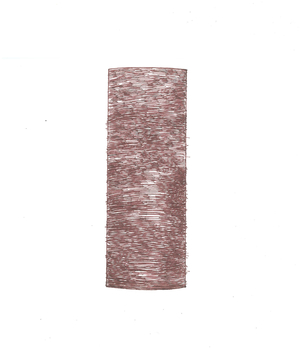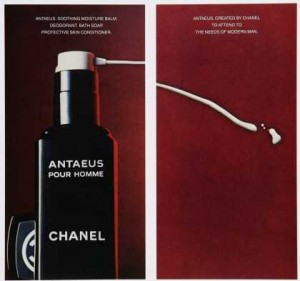Tagged With ‘1981’
Chanel
Antaeus
8 December, 2014
 When I first started thinking about The Sniff Box, I wondered how I could make it look different from other perfume blogs. I knew I’d have no problem with the overall look, thanks to my super-talented friend, Leanda Ryan, whose design perfectly reflects the idea of ‘perfume in plain English’.
When I first started thinking about The Sniff Box, I wondered how I could make it look different from other perfume blogs. I knew I’d have no problem with the overall look, thanks to my super-talented friend, Leanda Ryan, whose design perfectly reflects the idea of ‘perfume in plain English’.
But illustrating individual perfumes is a problem, as you’ll gather if you look at other perfume sites on the interweb. The obvious thing to do is to use a ‘pack shot’, generally supplied by the brand in question: it’s what the brands like as that’s how they want you to see their scent, but how many times do you want to see the same cheesy photograph?
The trouble is, if you don’t use a photo of the bottle, what can you use instead? How do you illustrate something you can smell but can’t actually see? It’s interesting to check out what other people come up with, but given that few bloggers can afford to commission photography or illustration, they’re generally stuck with stock shots of things like perfume ingredients – a sprig of lavender, say, or a twist of lemon – which are as cheesy as the pack shots they’re trying to avoid.
It took a while, but finally it struck me: since I can draw, after a fashion, why not draw my own illustrations? And that’s how I began.
All of which is a roundabout way of saying that, when I was trying to draw my bottle of Antaeus this morning, it gradually dawned on me that it is one of the most beautiful perfume bottles I know. It’s also one of the simplest: a tall, square, black-glass container that, if you took away the classy sans-serif Chanel lettering, would bear a more-than-passing resemblance to sinister monolith in 2001: A Space Odyssey.
Designed (or at least commissioned) by Chanel’s long-standing artistic director, Jacques Helleu, and launched in 1981, Antaeus was a kind of dark-side twin to the brand’s only other men’s fragrance at that time, Pour Monsieur (launched way back in 1955). Their bottles may be almost identical in shape, but Pour Monsieur is as cool and transparent as Antaeus is brooding and mysterious, and that reflects the fact that they’re very different scents.
Pour Monsieur is a refined, impeccably discreet fragrance: perfect in its way but perhaps (dare one whisper it?) just a tiny bit dull. Antaeus, by contrast, is a dark sexy scent that was launched just as the disco era crashed and burned: the same year Ian Schrager and Steve Rubell sold out of Studio 54 and the big disease with a little name first reared its ugly head.
Antaeus (the scent) was created by Chanel’s much-fêted in-house perfumer, Jacques Polge, in collaboration with François Damachy, now head of fragrance at Dior). As suggestive as Pour Monsieur is safe, its sexiness comes from castoreum, derived from a secretion extracted from beaver wee (I kid you not), which despite its revolting origins becomes, after careful treatment, a potent perfume ingredient, with its musky, leathery smell.
It’s a warm, slightly spicy leather scent, with a lot of Mediterranean herbs, most notably clary sage and thyme, that most of us would probably associate with hot, rocky mountainsides in southern France and Greece. My nose isn’t yet sensitive enough to identify them, but it also apparently contains labdanum (derived from two different species of Cistus, another Mediterranean shrub), as well as sandalwood and patchouli, which presumably add to the slightly hippyish warmth of the scent.
 Antaeus became a big best-seller in the early 1980s initially, it seems, among gay men, and with its hints of sex and leather it’s easy to see why. Chanel itself tapped into this trend in 1983 with a delightfully pervy advert (pictured), whose subtext I can leave to your imagination.
Antaeus became a big best-seller in the early 1980s initially, it seems, among gay men, and with its hints of sex and leather it’s easy to see why. Chanel itself tapped into this trend in 1983 with a delightfully pervy advert (pictured), whose subtext I can leave to your imagination.
But gay men, as we’ve often been told, are classic early adopters, and these days Antaeus is just as likely to attract anyone who enjoys a rich and complex scent. It’s long been one of my favourites, for its warmth and easy appeal, but I love its darker origins too: sex (and history) in a bottle.